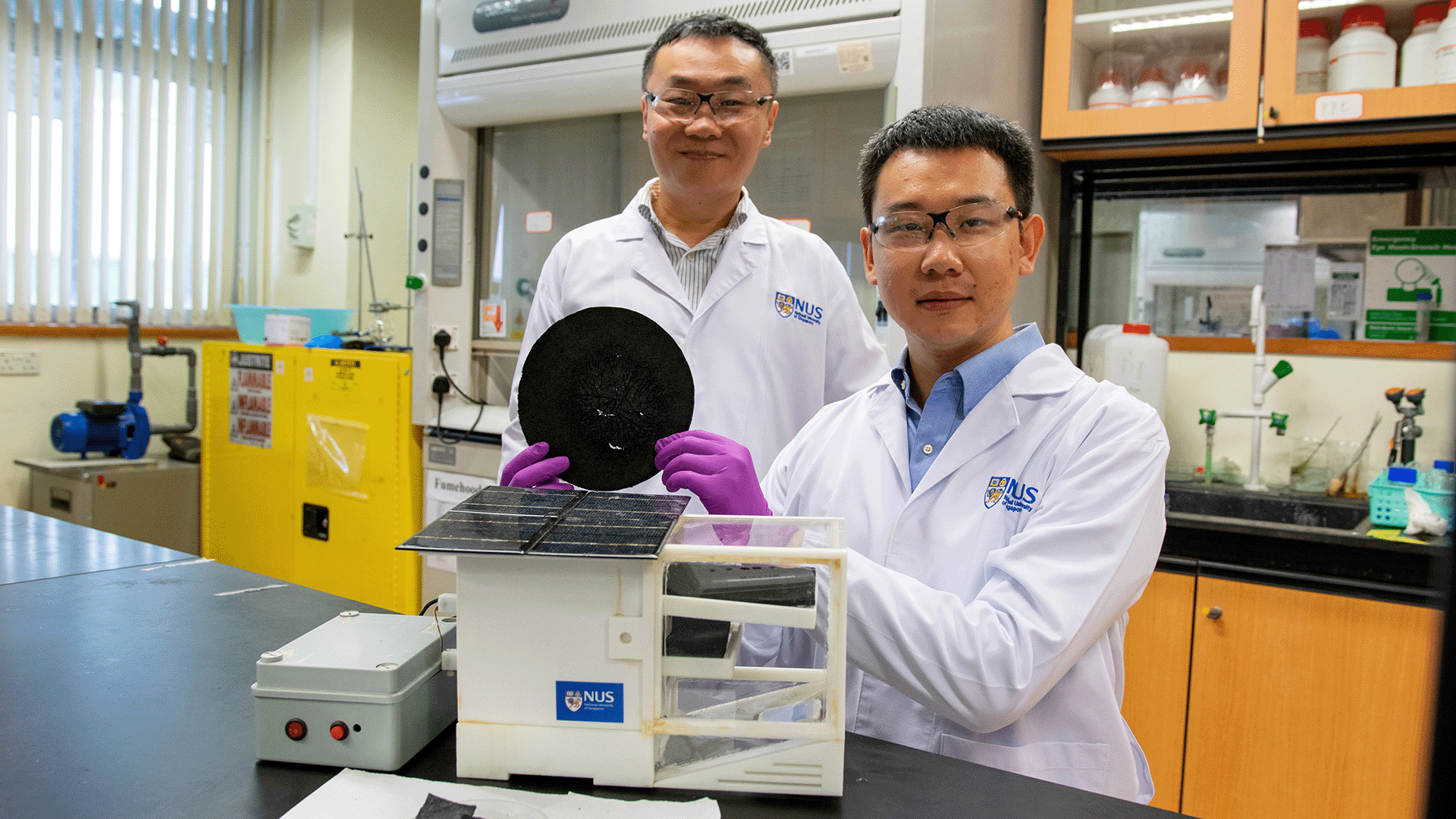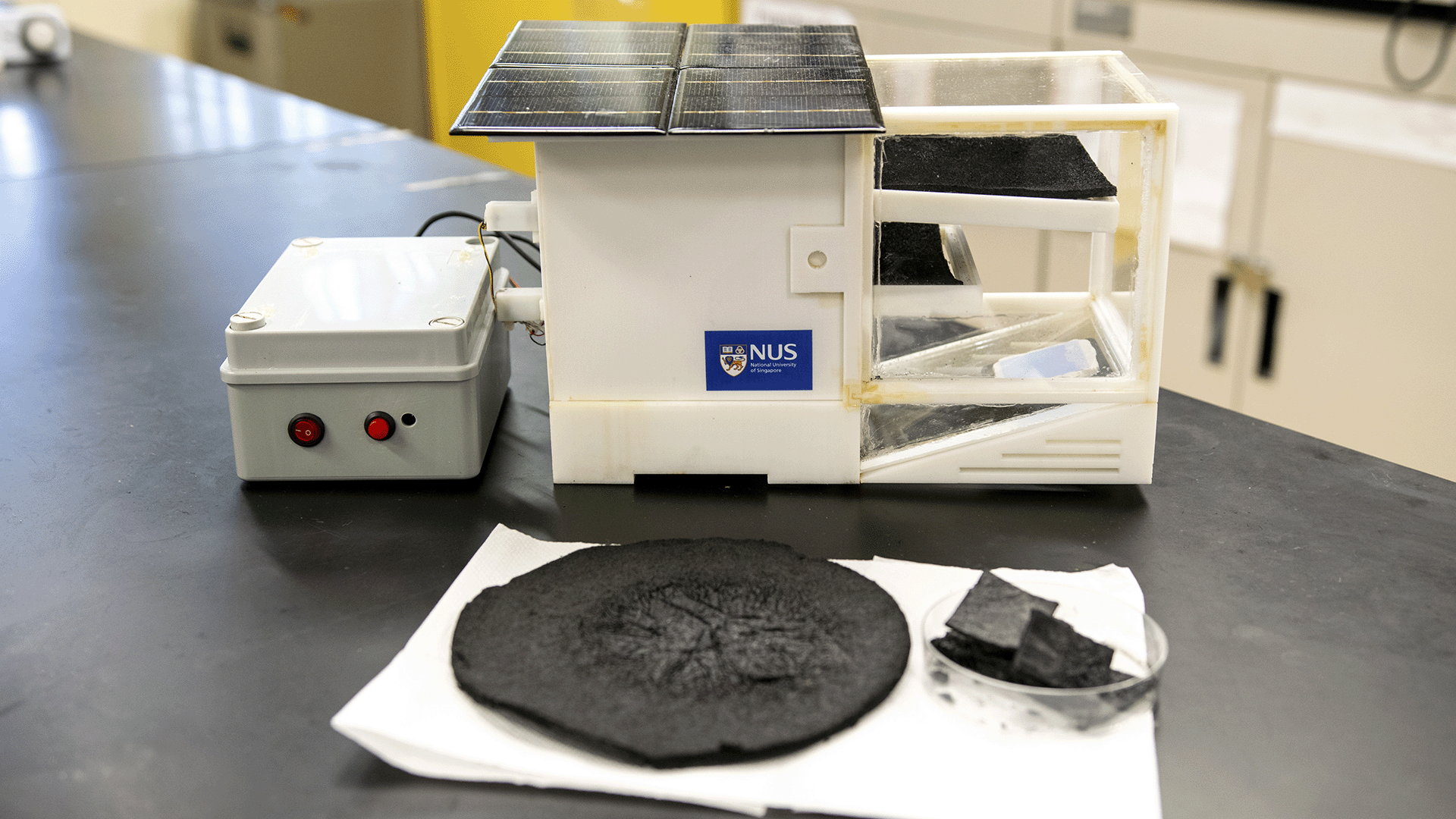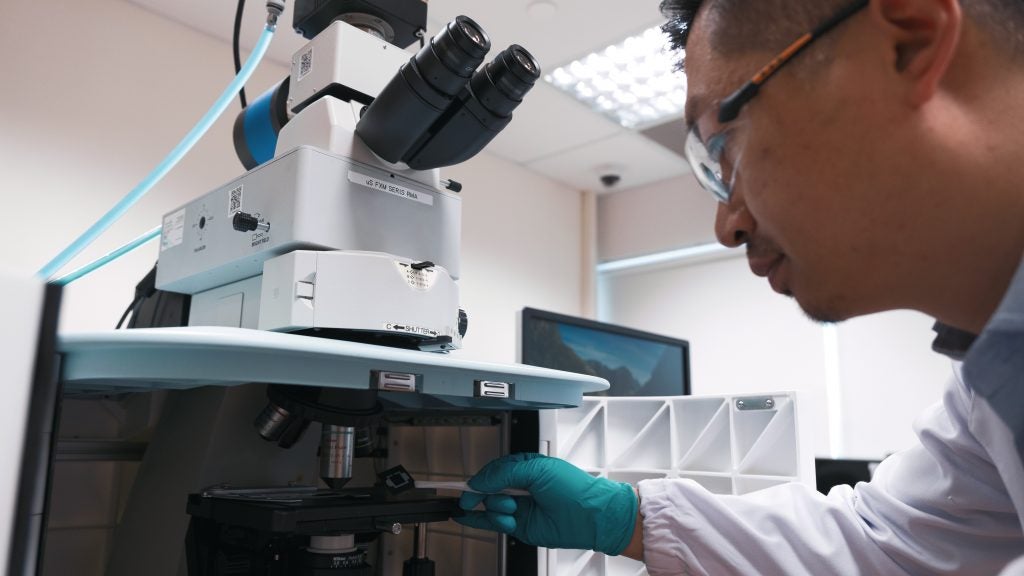
A novel aerogel that can efficiently harvest water from the air could be a solution to combatting the growing challenge of freshwater shortages around the world, particularly in arid and drought-prone regions. The aerogel, which can absorb up to 5.5 times its weight in water and perform even in low humidity environments, has been developed by a team led by Associate Professor Tan Swee Ching (Materials Science and Engineering).
The Earth’s atmosphere holds an estimated 13,000 trillion litres of water, a potentially vast resource that has yet to be effectively harnessed for daily use. Previous methods of tapping this resource have struggled with inefficiencies, often requiring significant amounts of energy or operating poorly in low-humidity environments.
The research team’s new aerogel represents a major step forward in sorption-based atmospheric water harvesting (SAWH), a method that uses materials called sorbents to extract water vapour from the air. Their findings were published earlier this year in the journal Advanced Materials.

While traditional sorbents like silica gels and zeolites have struggled to extract significant amounts of water or required high temperatures to do so, the new aerogel overcomes these hurdles. It combines magnesium chloride and carbon nanotubes to create a material that can absorb water efficiently and release it when exposed to sunlight or a slight increase in temperature.
“The aerogel exhibits rapid absorption/desorption kinetics with 12 cycles per day at 70 per cent relative humidity, equivalent to a water yield of 10 litres per kilogramme of aerogel per day,” said Assoc Prof Tan. “Carbon nanotubes play a crucial role in boosting the aerogel’s photothermal conversion efficiency, enabling quicker water release with minimal energy consumption.”
Like a sponge, the aerogel absorbs water vapour into its porous structure where it is condensed and stored until needed. When exposed to sunlight or temperatures of around 50°C, the aerogel releases the absorbed moisture as fresh water.
This low-energy process means the system can operate in remote or underdeveloped areas where access to electricity is limited. The aerogel’s cost-effective production also makes it an appealing option for large-scale use, with the raw materials costing just $2 per square metre.

To demonstrate the aerogel’s potential, the research team has built an autonomous water generator that runs entirely on solar power. The system, which alternates between two layers of aerogel to absorb and release water, provides a continuous supply of freshwater without needing any external energy source.
The implications of this innovation extend beyond just water harvesting. The aerogel has potential applications in areas like evaporative cooling, energy harvesting, and urban farming. The researchers have filed a patent for the technology and are seeking to collaborate with local farms and industry partners to bring this development to market.





